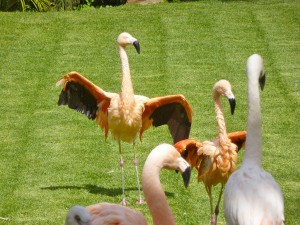 In public zoos and private collections located across the European Union, birds such as flamingos, cranes, swans and pelicans stand or float in shallow waters. The birds are not caged nor is the area they inhabit netted. The birds appear at first sight to be free to fly away.
In public zoos and private collections located across the European Union, birds such as flamingos, cranes, swans and pelicans stand or float in shallow waters. The birds are not caged nor is the area they inhabit netted. The birds appear at first sight to be free to fly away.
In fact, these birds cannot fly away as many have been subjected to a flight restraint method known as “pinioning”. Pinioning is a surgical procedure which involves the amputation of the end of a bird’s wing at just a few days old. Usually carried out without anaesthetic and using a sharp pair of scissors, birds subjected to the practice will grow to be lop-sided and, as such, will never experience flight; something which they are fundamentally predisposed, and indeed evolved, to do.
The Take Flight campaign seeks to achieve the following goals:
- The inclusion of a statement within the EU Animal Welfare Framework which recognises pinioning, and other forms of mutilation for non-medical purposes, as unacceptable
- The introduction across EU Member States of domestic legislation to prohibit pinioning, and other forms of mutilation for non-medical purposes
- The effective enforcement across EU Member States of domestic legislation to prohibit pinioning, and other forms of mutilation for non-medical purposes
- An end to the deliberate mutilation of birds for management purposes across all EU Member States

